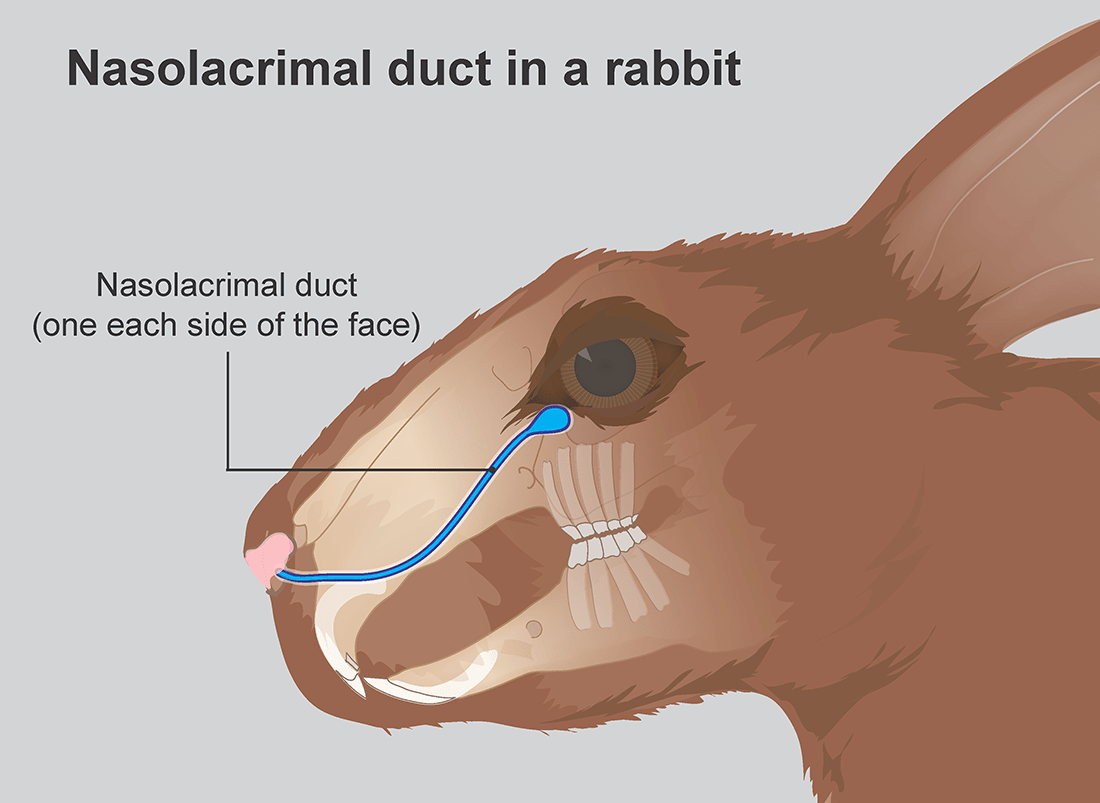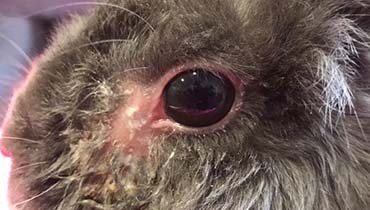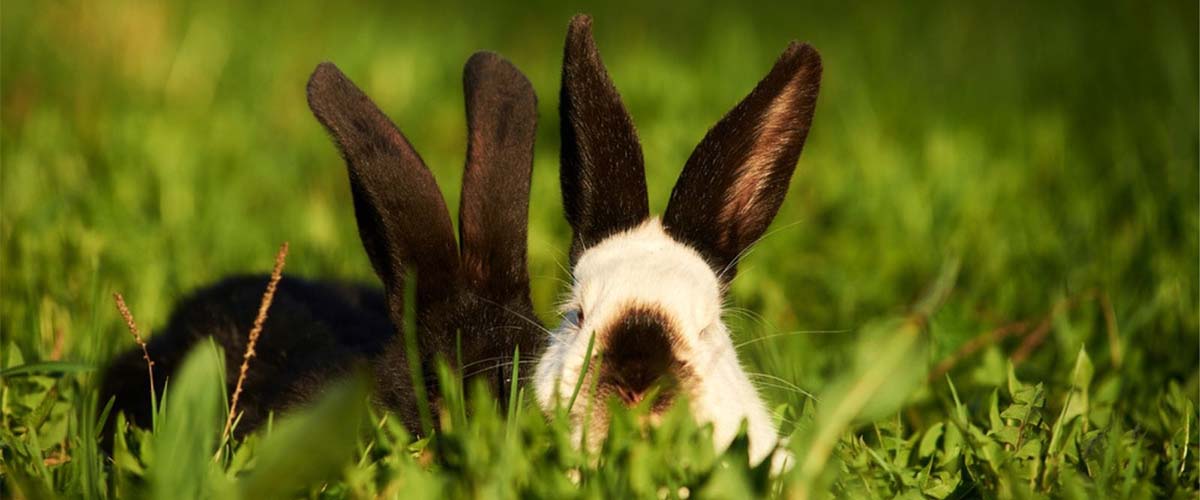Swollen Tear Duct / Dacryocystitis in Rabbits
Overview
- Dacryocystitis is inflammation of the tear ducts (the tubes that drain tears from the eyes to the nose) that causes weepy eyes and a white, sticky ocular discharge
- Dacryocystitis is a common problem in pet rabbits, and is usually linked to problems with the teeth.
- Contact your vet straight away if your rabbit has symptoms of dacryocystitis; delaying treatment can make it much harder to treat.

Tear ducts drain tears into the nose, and sit very close to the teeth in rabbits.
Tear ducts (also called nasolacrimal ducts) are tiny tubes that drain tears from the eyes into the nose (see image above). ‘Dacryocystitis’ is inflammation of these ducts, a condition that usually leads to them becoming blocked and/or infected. Dacryocystitis can be caused by:
- Dental disease - this is by far the most common cause of dacryocystitis in rabbits because their tear ducts sit so close to their teeth.
Blockage and infection - rabbit tear ducts are very long, thin and prone to blockage. Blockages are often caused by small pieces of hay, or sludge in tears.
Symptoms
Symptoms of dacryocystitis tend to include:
- Watery eye(s)
- Conjunctivitis (red/swollen eyes)
- Recurrent eye infections
- Sore skin, tear staining, and loss of fur around the eyes
- A painful mouth/face
- Reduced appetite
- Weight loss

Dacryocystitis usually causes a white sticky ocular discharge.
Treatment
Dacryocystitis not related to dental disease
If your rabbit’s dacryocystitis is caused by a simple blockage, their treatment is likely to include antibiotics, pain relief and a tear duct flush. A tear duct flush is a procedure that involves your vet putting a tiny tube into your rabbit’s blocked tear duct and flushing it with saline. It’s often necessary to do more than once to cure the problem completely, and sometimes requires an anaesthetic.
Dacryocystitis related to early dental disease
If your rabbit’s dacryocystitis is caused by dental disease (tooth root abscesses and/or overgrowth teeth pushing on the ducts), they will need to be treated for this in addition to the treatment above. If the dental issue can be resolved, the dacryocystitis is also likely to resolve. However, if the dental disease is severe, or comes back, your rabbit may develop a more complicated case of dacryocystitis.
Complicated cases of dacryocystitis
If your rabbit’s symptoms don’t improve after treatment, or point towards a serious dental problem, your vet may suggest further investigations such as X-rays, CT/MRI scans, and eye swabs to check for infection. Unfortunately, if your rabbit’s dacryocystitis is found to be caused by a severe dental problem (usually a tooth squashing the duct), a cure is unlikely. It may be possible to remove the problem tooth, but it’s very likely that there will be permanent damage to the bone surrounding it. If a cure isn’t possible, regular eye bathing and pain relief may be the best option, but if your rabbit is in pain or getting frequent infections, it may be necessary to consider putting them to sleep.
Outlook
Many cases of dacryocystitis can be cured by simply flushing and unblocking the duct, but unfortunately, cases involving dental disease are often much more difficult to treat. If your rabbit has an incurable case of dacryocystitis, your vet will discuss the most suitable plan for them, which may include long-term management (bathing and pain relief). If the problem keeps coming back, and your rabbit is suffering, you may need to consider the difficult decision of putting them to sleep.
Prevention
The best way to prevent dacryocystitis is to keep your rabbits’ teeth healthy by feeding them a well-balanced diet, high in fibre. Find out more about dental disease in rabbits.
When to contact your vet
Contact your vet if you notice your rabbit has weepy eyes, eye discharge or any signs of dacryocystitis. Never wait to see if your rabbit improves, this could make the problem much worse.
Cost
Treatment for dacryocystitis can become very expensive, especially if your rabbit requires ongoing care and repeat check-ups. It’s important to speak openly to your vet about your finances, the cost of treatment, as well as what you think is right for your rabbit. There may be several treatment options, so if one doesn’t work for you and your pet your vet may be able to offer another.
Consider insuring your rabbit as soon as you get them, before any signs of illness start. This will ensure you have all the support you need to care for them.
Published: May 2021
Did you find this page useful?
Tell us more
Please note, our vets and nurses are unable to respond to questions via this form. If you are concerned about your pet’s health, please contact your vet directly.
Thank you for your feedback
Want to hear more about PDSA and get pet care tips from our vet experts?
Sign up to our e-newsletter
Written by vets and vet nurses. This advice is for UK pets only. Illustrations by Samantha Elmhurst.

